St. John’s is the historic Parish Church of Eltham.
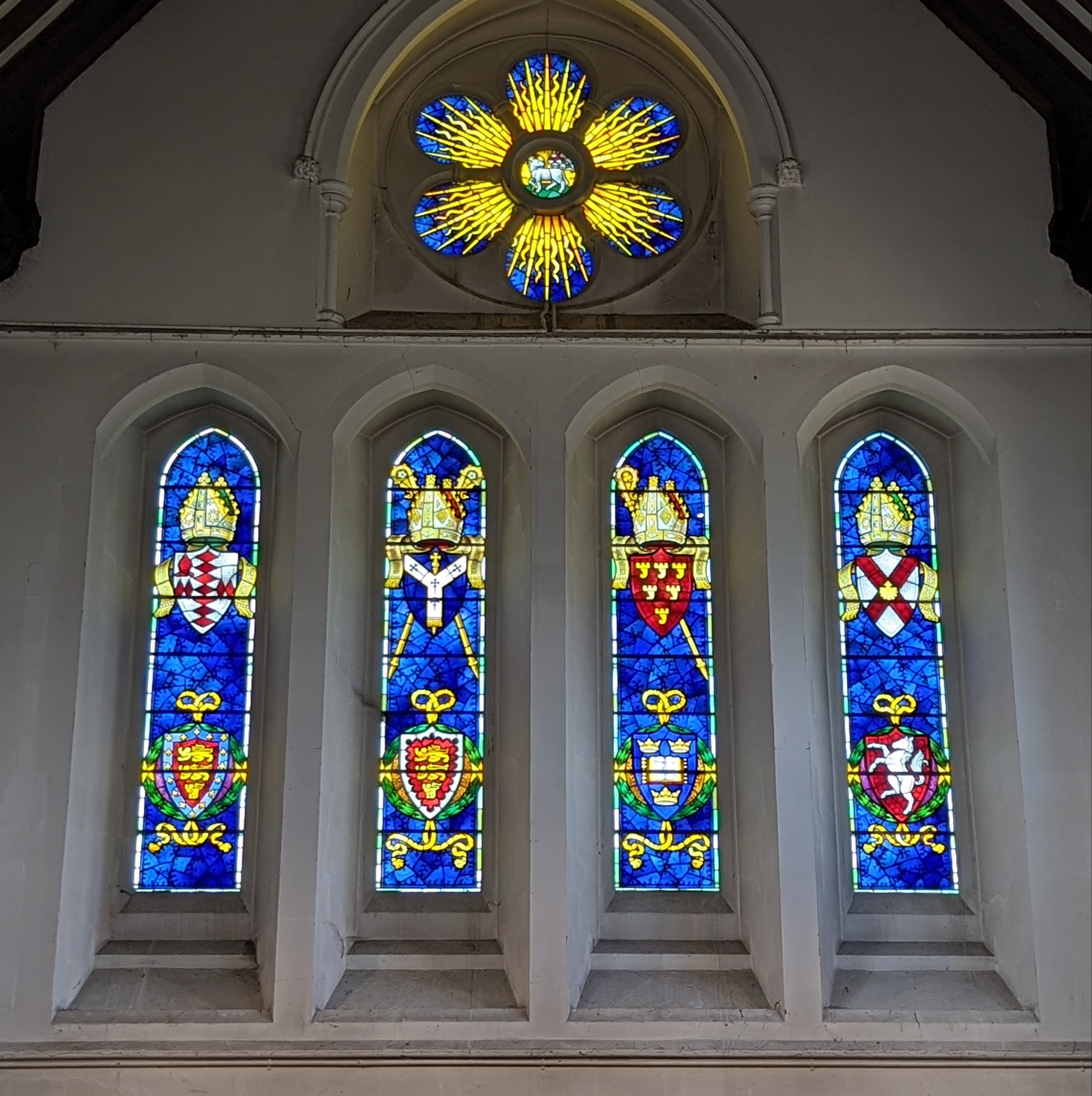 Eltham has a long and rich history going back 1000 years. Eltham was already an established village in 1086, but there is no mention of a church in the Domesday Book. The first suggestion of its existence is in 1115, when Chrysom Oil, used in Baptisms, is recorded as being brought to Eltham from Rochester Cathedral. The first known Rector of the church was Adam de Bromleigh in 1160, and the first definitive record of the church was in 1166, when William, Earl of Gloucester and patron of the living, gave the “Church of St John of Hautham with its appurts (apparatus)” to the Priory of Keynsham, Somerset, which he founded. The priory’s Coat of Arms is shown in the West window of the church.
Eltham has a long and rich history going back 1000 years. Eltham was already an established village in 1086, but there is no mention of a church in the Domesday Book. The first suggestion of its existence is in 1115, when Chrysom Oil, used in Baptisms, is recorded as being brought to Eltham from Rochester Cathedral. The first known Rector of the church was Adam de Bromleigh in 1160, and the first definitive record of the church was in 1166, when William, Earl of Gloucester and patron of the living, gave the “Church of St John of Hautham with its appurts (apparatus)” to the Priory of Keynsham, Somerset, which he founded. The priory’s Coat of Arms is shown in the West window of the church.
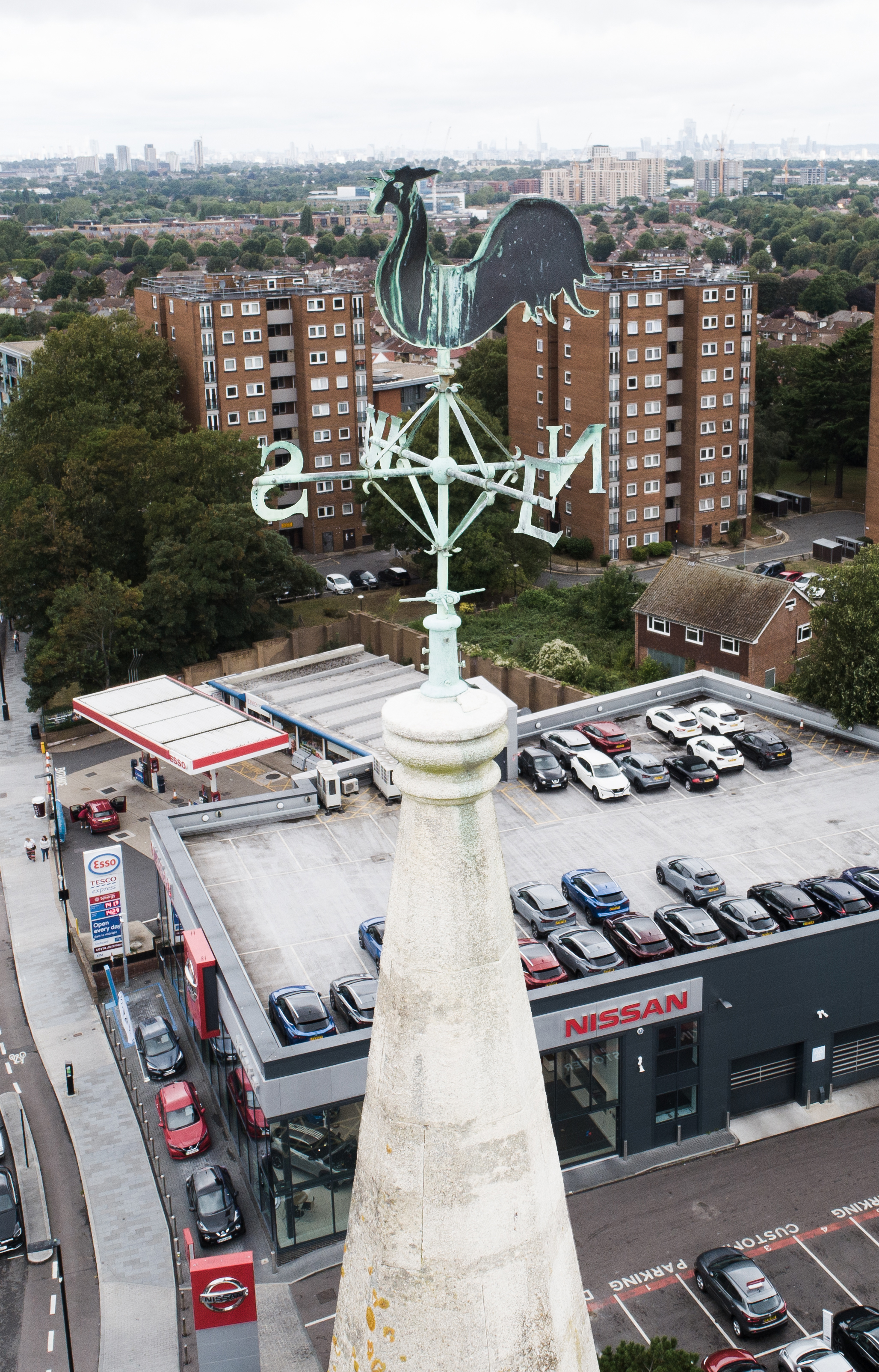 Very little is known about the pre-Tudor church except that it contained a rood screen and statues of saints, before which candles were burnt, as ancient wills of some parishioners show. The church had a shingled spire and possibly nave, chancel, South aisle and porch with a room above. By the 1460’s it had some bells. By 1556 there was a clock, and by 1568 a copper weathervane. In 1572 the Vicar, John Carricke, gave three shillings for a new sundial, and by 1592 the parish was paying Goodman Wybourne to teach children somewhere on the premises.
Very little is known about the pre-Tudor church except that it contained a rood screen and statues of saints, before which candles were burnt, as ancient wills of some parishioners show. The church had a shingled spire and possibly nave, chancel, South aisle and porch with a room above. By the 1460’s it had some bells. By 1556 there was a clock, and by 1568 a copper weathervane. In 1572 the Vicar, John Carricke, gave three shillings for a new sundial, and by 1592 the parish was paying Goodman Wybourne to teach children somewhere on the premises.
In Commonwealth times (around themed to late 17th Century) the Vicar, Dr Owen, a friend of John Evelyn the diarist, was replaced in the living by the puritan William Overton. Walls were whitewashed, images and stained glass broken, and a pewter dish did duty as a font. Dr Owen’s family memorial can be seen in the Northeast corner of the North aisle.
In 1667 while workmen were digging to create the vault under Sir John Shaw’s aisle, the roof of the nave collapsed due to their carelessness. Sir John Shaw was the local squire and lived in Eltham Lodge (now the Royal Blackheath Golf Clubhouse off Court Road). The whole structure was badly shaken and had to be rebuilt the following year, with the parishioners paying £146.16s.3d towards this (around £22,500 today).
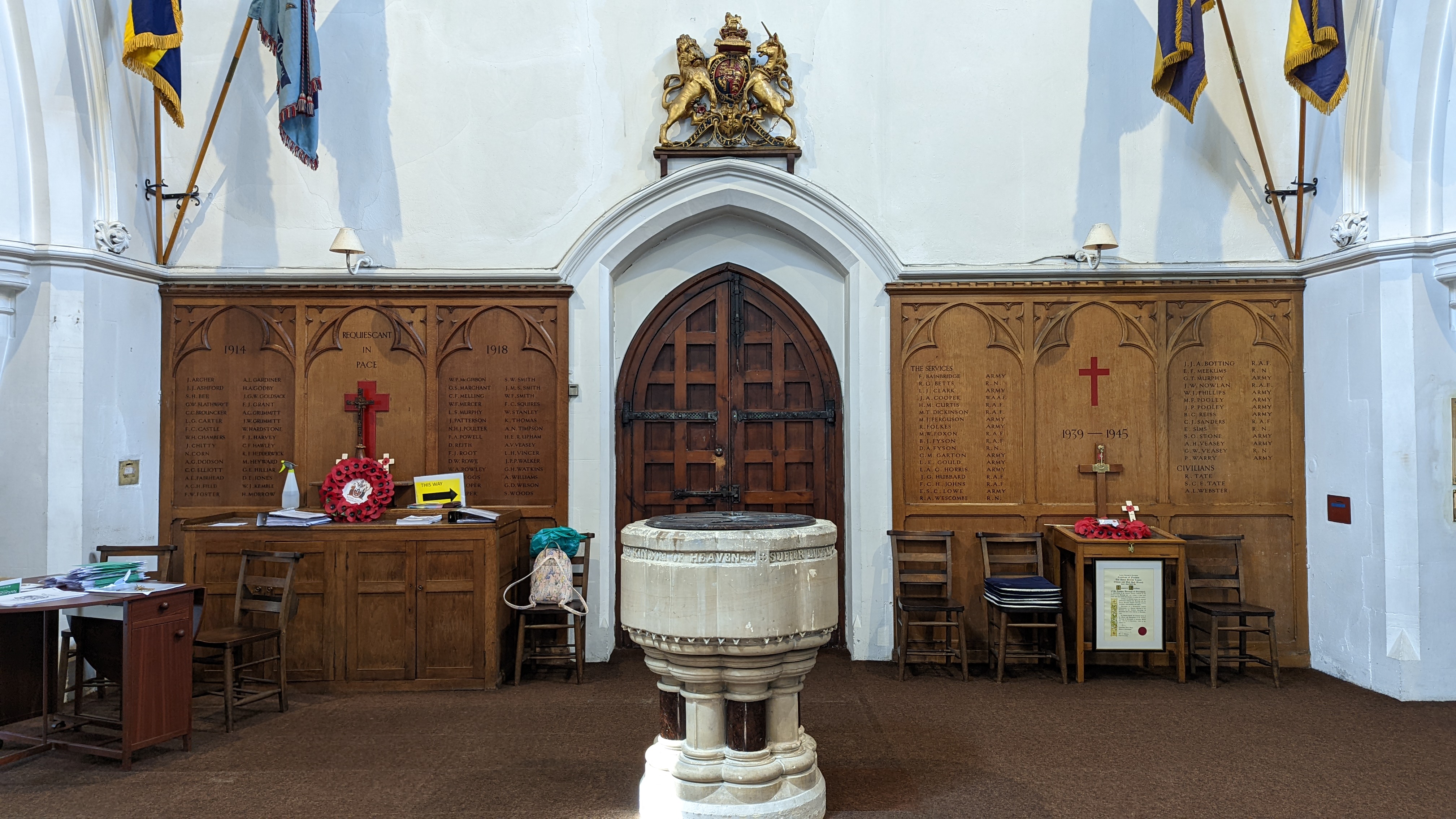 There were many repairs and additions during the following two centuries, including galleries erected in 1751, 1764, 1819 and 1828 as the town’s population increased. The Royal Coat of Arms had hung on the front of a gallery since 1816 and can still be seen above the door to the parish office at the West end of the church. The memorials on the aisle walls date back to the church of 1667 – 1870.
There were many repairs and additions during the following two centuries, including galleries erected in 1751, 1764, 1819 and 1828 as the town’s population increased. The Royal Coat of Arms had hung on the front of a gallery since 1816 and can still be seen above the door to the parish office at the West end of the church. The memorials on the aisle walls date back to the church of 1667 – 1870.
In 1830 the church was described in a published guidebook as “a mean fabric, much patched and modernised; with scarce a trace of anything like good work…” Inside the church you will find scale models of the old and current building, from which one can judge the validity of these remarks. There is also a framed print of the old church.
Between 1872 and 1879 the old church was completely demolished, and the new building, designed by architect Sir Arthur Bloomfield and built by James Naylor of Rochester, was erected 3 metres north of the old site, occupying a larger area.
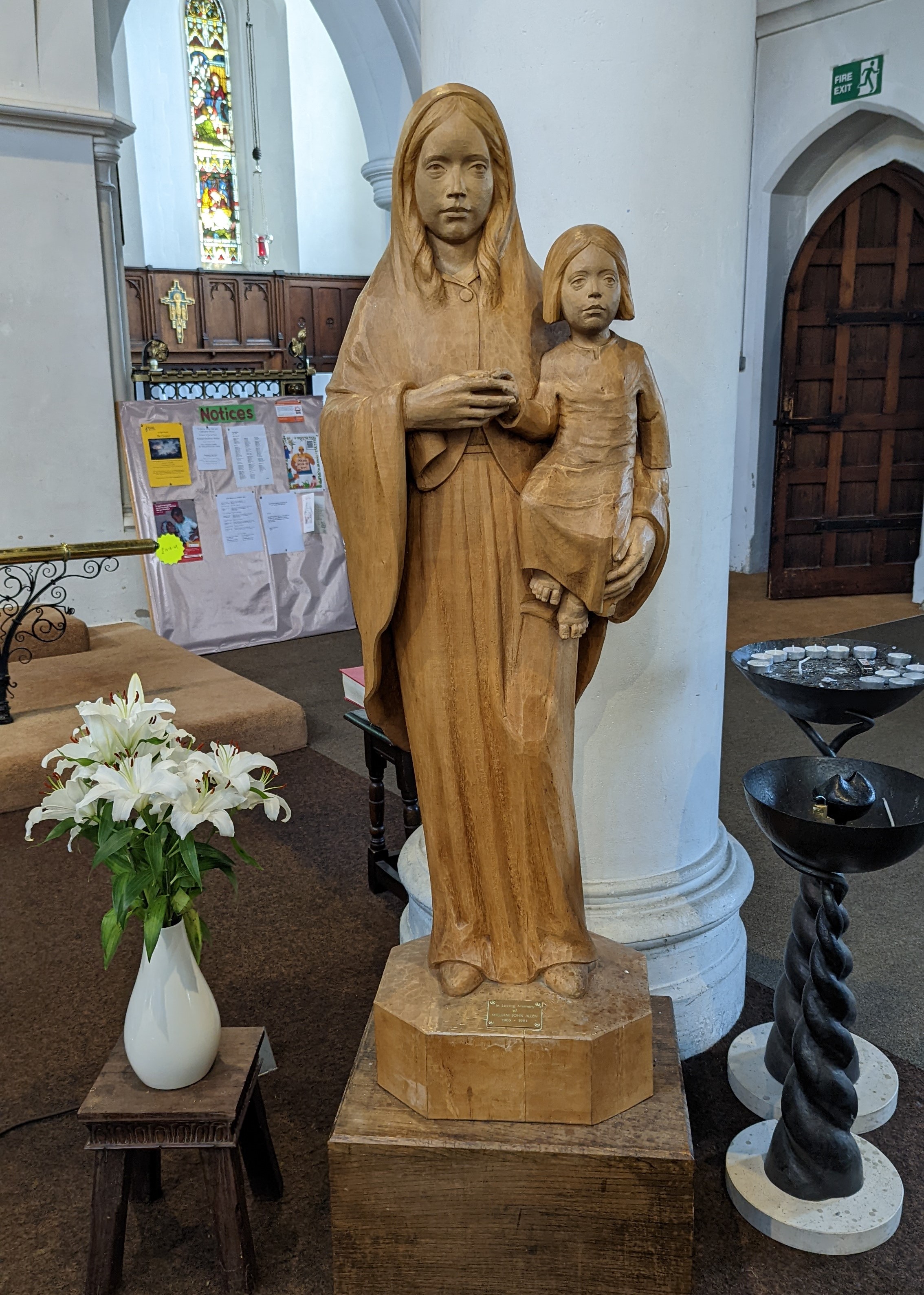 Some of the original memorial plaques were retained, and the brass lectern transferred from the old church. The church was consecrated in 1875, and the tower and spire were completed as funds became available in 1879. A service of thanksgiving for the completion of the building was conducted by Rev. Walter J Sowerby on 24th June 1880 (the patronal feast day of St John the Baptist).
Some of the original memorial plaques were retained, and the brass lectern transferred from the old church. The church was consecrated in 1875, and the tower and spire were completed as funds became available in 1879. A service of thanksgiving for the completion of the building was conducted by Rev. Walter J Sowerby on 24th June 1880 (the patronal feast day of St John the Baptist).
The pews are actually older than the current building. The cheap pine pews of c1875 were replaced by mid-19th century oak pews from St Mary’s church in Lambeth when that building became the Museum of the History of Gardening in the 1980’s. The crucifix above the pulpit, given to the church in 1887 was carved by Joseph Meyer, who three times played Christ in the famous Oberammergau Passion Play. The late 17th century chair in the chancel was a gift to the church in the early 20th century. There is a lime wood statue of the Madonna and Child, carved by a member of the congregation.
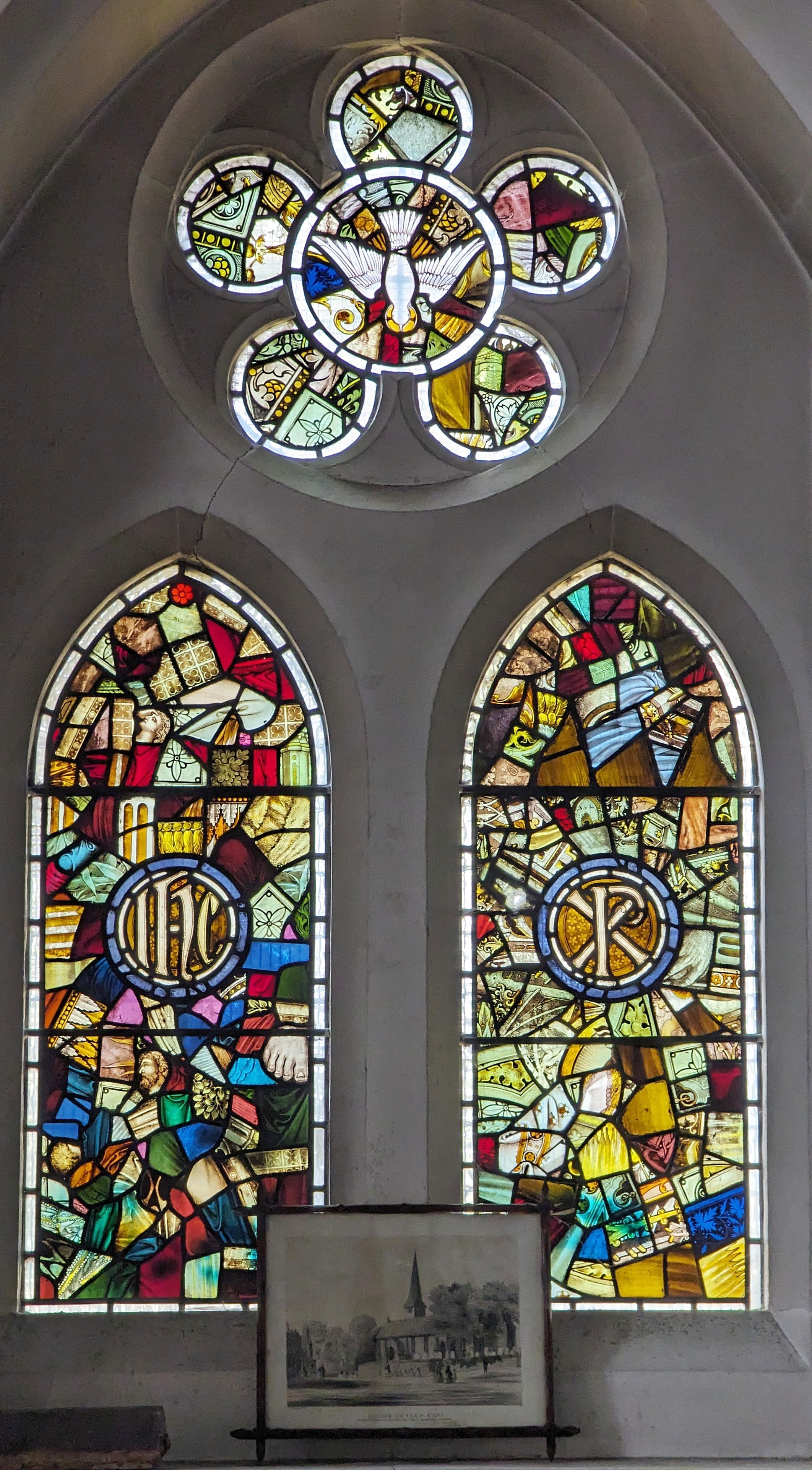 Windows
Windows
Only nine of the original 19th century windows survived the Second World War. They are the darker coloured ones in the North aisle, depicting various saints. One window at the West end of the North aisle was remade from shattered fragments of glass. The remaining windows are mid-20th century, and are of much brighter colours, or plain glass. A more detailed description of the windows is available for visitors to the church.
Contact
For further information please feel free to contact heritage@elthamchurch.org.uk